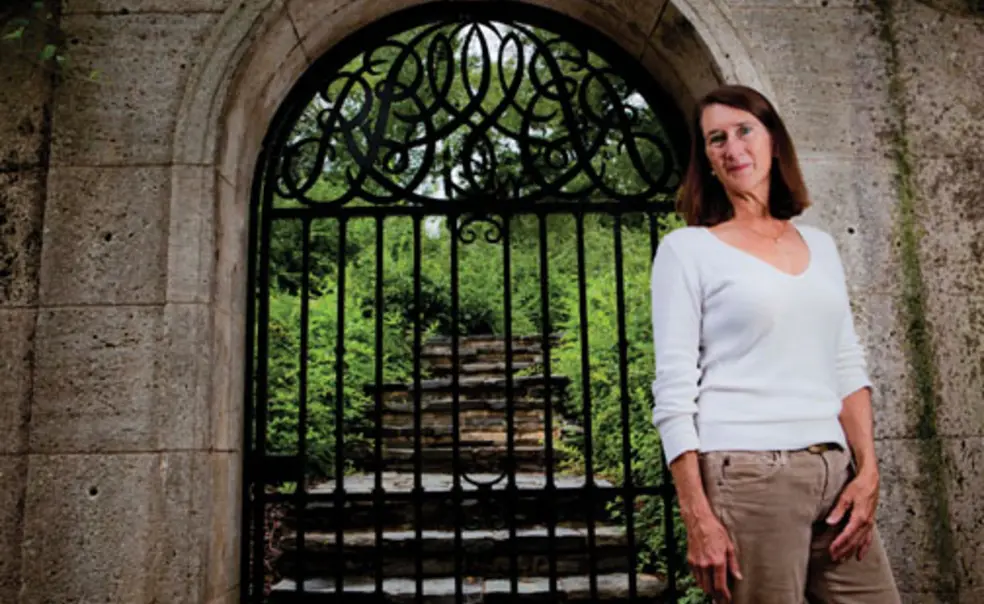Growing up on the edge of a pine forest in Auburn, Maine, Rebecca Trafton ’75 would play outdoors every day. “For me there was so much inspiration in the world of nature,” Trafton says. “I always knew I would have some interaction with nature. I just wasn’t sure exactly how it would play out.”
Trafton was right. She ended up starting a landscape-design practice, creating private gardens for individual and commercial clients. Later she was co-executive producer and host of a public-television series that aired in 2008 called GardenStory: Inspiring Spaces, Healing Places.
Today Trafton faces the biggest challenge of her career — heading an organization dedicated to preserving a storied but endangered garden in the middle of Washington, D.C.
Trafton is co-founder and president of the Dumbarton Oaks Park Conservancy, which aims to save a 27-acre woodland garden that has been ravaged by storm water, invasive plants, and heavy recreational use.
Designed by the legendary landscape gardener Beatrix Farrand — who also designed large portions of the Princeton University campus — Dumbarton Oaks Park is the lesser-known companion to the formal garden at Dumbarton Oaks, the estate built by philanthropists Mildred and Robert Bliss on the edge of Washington, D.C.’s Georgetown neighborhood.
Both projects were constructed in the 1920s and ’30s, with paths connecting the two. In 1940, the Bliss family deeded the formal upper garden and the home to Harvard University and the lower park to the National Park Service. Although carefully constructed by Farrand, the park was designed to be natural-looking. The portion that Trafton is trying to save is a series of meadows, woodlands, and a small tributary dotted with bridges, dams, and benches.
Trafton was well aware of the upper garden, which is an academic center and tourist attraction. But she knew little about the lower park until she moved to Washington in 2008 and became a volunteer for Dumbarton Oaks. When she was asked whether she would lead a project to preserve the park, “my initial response was that it had passed a point where restoration was possible,” Trafton says. “But the more time I spent there, the more I fell in love with its unique spirit.” Standing in the formal gardens, she says, “you hear the music of the brook below and want to walk down.”
The problems facing Dumbarton Oaks Park are significant. Widespread development and paving nearby have funneled stormwater runoff into the valley where the park was built. Meanwhile, the spread of non-native species and heavy use by walkers and bikers have taken their toll.
“The stream banks are eroded and broken, and the pond no longer holds water,” Trafton says. “The bridges, benches, paving, and other built elements have been damaged, although their beauty is still evident. Aggressive invasive vines are rampant throughout the park.” Despite this, she says, the spirit of the site “is still evident — a haunting beauty within a valley full of birdsong and displays of seasonal bloom.”
The group planned to mark National Public Lands Day Sept. 24 by inviting volunteers to the park. On Oct. 1, the group was scheduled to partner with the Potomac Appalachian Trail Club and the National Wildlife Federation to do trail restoration. Several days have been scheduled for the National Park Service to train volunteers to become “Weed Warriors.”
“We know that, to do this work well, we will need a period of 15 years to restore the park and will need to raise millions of dollars,” she says.
Louis Jacobson ’92 is a staff writer for PolitiFact.












No responses yet